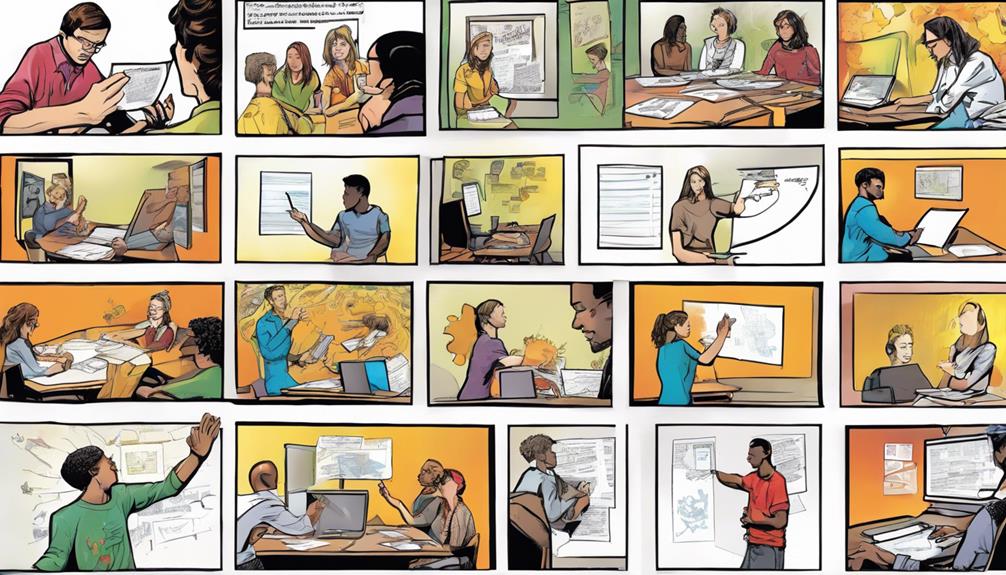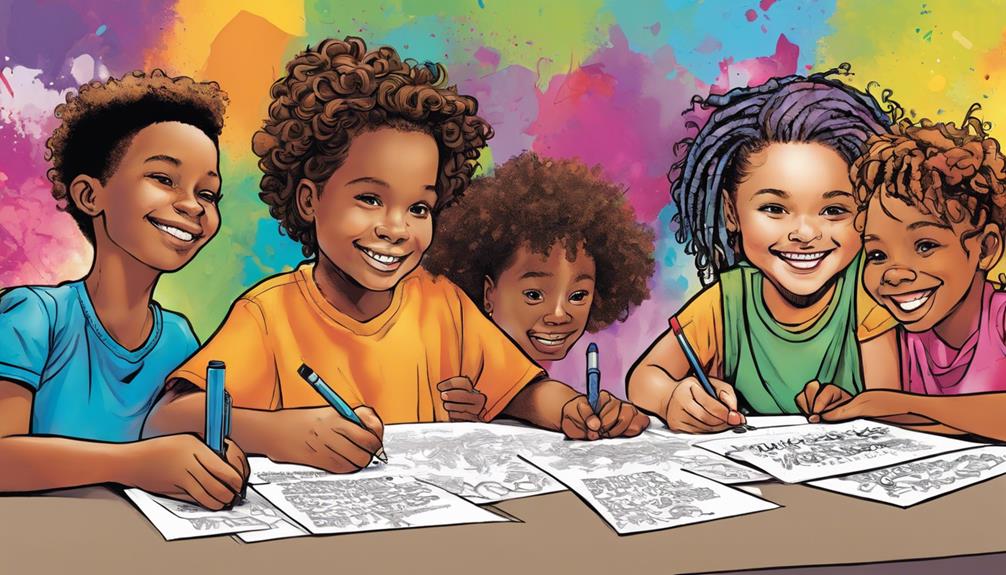Ready to speed up your learning journey? Implement these 5 proven techniques! First, enhance your practice with workbooks, past papers, and interactive games. Then, establish clear goals to stay focused and motivated. Next, apply the 80/20 rule by concentrating on crucial content for optimal results. Combat distractions with noise-canceling headphones and create a peaceful study environment. Lastly, perfect your revision techniques by planning out a schedule, utilizing mnemonic devices, and testing yourself consistently. These strategies will enhance your learning process and guide you towards academic excellence.
Key Takeaways
- Utilize workbooks, past papers, and puzzles for interactive learning.
- Set achievable goals to track progress and maintain motivation.
- Focus on mastering critical topics efficiently with the 80:20 principle.
- Manage distractions with a quiet study space and structured schedule.
- Enhance revision with mnemonic devices, active recall, and a detailed study plan.
Practice and Application Strategy

To accelerate your learning process, engage in practice and application strategies that involve utilizing various resources like workbooks, past paper questions, worksheets, puzzles, and games to enhance your understanding of the content.
By actively immersing yourself in these tools, you can deepen your comprehension and retention of key concepts.
Work through exercises in workbooks to reinforce your knowledge, tackle challenging past paper questions to test your understanding, and use interactive games to make learning fun and engaging.
Remember, practice makes perfect! So, engage wholeheartedly in these activities with enthusiasm, and you'll soon find yourself mastering the material effortlessly.
Don't hesitate to seek help from teachers or online resources if you encounter difficulties. Keep practicing, keep applying, and watch your skills soar!
Goal-Oriented Learning Approach

Engage in a goal-oriented learning approach by setting achievable stages and targets for your progression. Breaking down your learning journey into smaller, manageable goals can make the process less overwhelming and more rewarding.
For example, if you're studying for a math exam, you could set a goal to master a specific set of equations by the end of the week. By establishing these milestones, you create a roadmap for your success and track your growth along the way.
This approach not only boosts motivation but also helps you stay focused and organized. Remember, every step you take towards your goal is a step closer to achieving academic excellence!
Application of the 80:20 Principle

Utilize the 80:20 Principle to streamline your focus on key skills and knowledge for accelerated learning.
This principle, also known as the Pareto principle, suggests that roughly 80% of outcomes come from 20% of causes.
By identifying the essential 20% of content that drives 80% of your learning progress, you can prioritize your efforts effectively.
For instance, in studying for exams, pinpoint the most critical topics or types of questions that frequently appear.
Focus on mastering these areas to maximize your learning gains efficiently.
Whether it's in math, science, or history, applying the 80:20 Principle allows you to concentrate on the most impactful aspects of your studies, propelling you towards academic success.
Distraction Management Techniques

Minimize distractions by establishing clear boundaries and emphasizing the importance of focused learning environments. Turn off notifications on your phone and set specific study times free from interruptions. Find a quiet spot away from noisy siblings or TV shows. Remember, every distraction takes away precious learning time!
When studying, create a to-do list to stay on track and avoid wandering off course. If you catch yourself daydreaming, gently nudge yourself back to the task at hand. Try using noise-canceling headphones or instrumental music to stay focused. Reward yourself with short breaks after completing tasks to keep motivation high.
Effective Revision Strategies

Maximize your study sessions by implementing proven effective revision strategies.
- Create a detailed study schedule to manage your time efficiently
- Use mnemonic devices to help you remember key information
- Practice active recall by testing yourself on the material regularly
Frequently Asked Questions
How Can Students Balance Practice and Application Effectively?
You balance practice and application effectively by utilizing workbooks, past paper questions, and various resources. Incorporate different question types for thorough practice. Remember, feedback on your work is essential for learning. Stay focused and persistent in your efforts.
What Are Some Common Pitfalls in Setting Achievable Goals?
To set achievable goals effectively, avoid vagueness and unrealistic targets. Break down tasks into manageable steps, use progress charts, and encourage self-assessment. Stay focused on essential skills with the 80:20 principle. Block distractions and teach effective revision techniques for success.
How Can Teachers Determine the Vital 20% of Content?
To determine the essential 20% of content, teachers should assess key concepts and skills critical for student understanding. Prioritize these elements for focused teaching. Utilize syllabuses, Course Guides, and personal experience for guidance.
What Strategies Can Students Use to Block Out Distractions?
Block out distractions by putting your blinders on. Control technology use, create a focused atmosphere, and stress the importance of learning over diversions. Prioritize tasks and maintain a focused mindset for peak concentration.
Are There Any Unconventional Revision Techniques That Students Can Try?
Try unconventional revision techniques! Experiment with mnemonic devices, teaching concepts to others, creating songs or poems, or using visual aids like flashcards or diagrams. Engage your creativity to make studying more effective and enjoyable.
Conclusion
To sum up, did you know that students who set specific, achievable goals are 42% more likely to succeed academically?
By implementing the five proven techniques for accelerating learning, you can boost your understanding and retention of key concepts.
From practical application to effective revision strategies, these strategies will guide you towards academic excellence.
So, why wait? Start implementing these techniques today and watch as your learning journey takes off to new heights!










